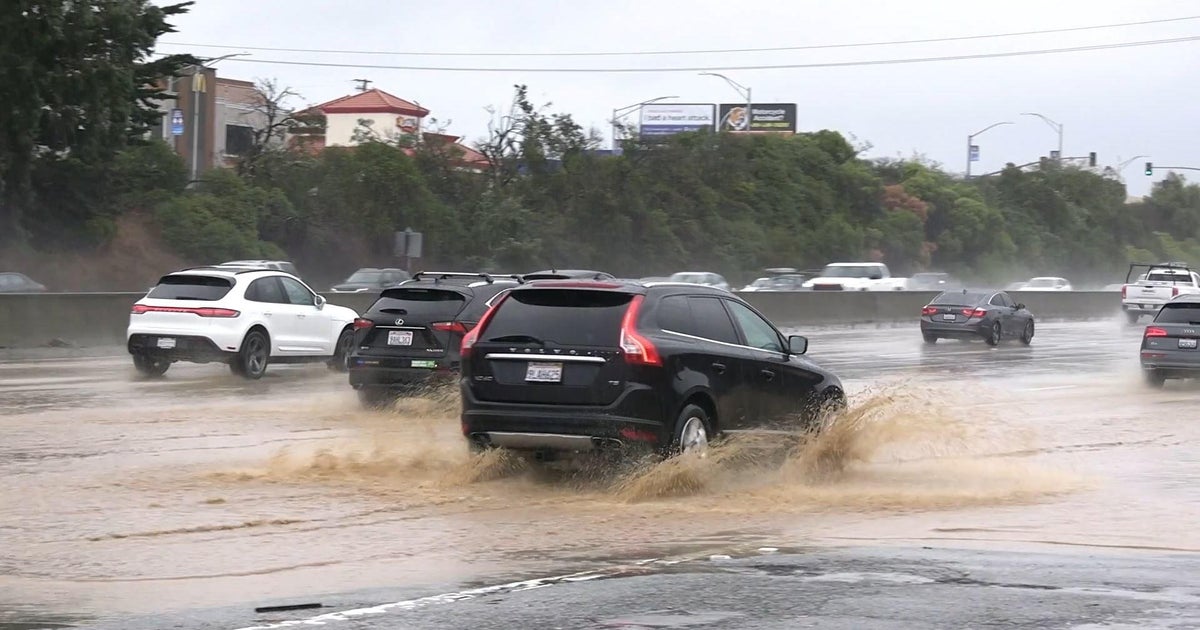BP's Oil Well to Stay Shut Despite Tropical Storm
ON THE GULF OF MEXICO (AP) -- Engineers have grown so confident in the leaky cap trapping oil inside BP's crippled well that they will leave it closed and unwatched if a tropical storm that formed Thursday forces them to flee, the government's spill chief said.
Barring another setback --and the three-month operation has been filled with them -- crude should never again gush from the infamous well.
Tropical Storm Bonnie, which blossomed over the Bahamas and was to enter the Gulf of Mexico by the weekend, could delay by another 12 days the push to plug the broken well for good using mud and cement, retired Coast Guard Adm. Thad Allen and BP officials conceded. Even if it's not a direct hit, the rough weather will push back efforts to kill the well by at least a week.
"While this is not a hurricane, it's a storm that will have probably some significant impacts, we're taking appropriate cautions," Allen said in Mobile, Ala.
But a week of steady measurements through cameras and other devices convinced Allen they don't need to open vents to relieve pressure on the cap, which engineers had worried might contribute to leaks underground and an even bigger blowout. The cap was attached a week ago, and only minor leaks have been detected.
Allen said he would decide Thursday evening whether to order the withdrawal of the rig that's drilling the relief tunnel engineers will use to permanently throttle the free-flowing crude near the bottom of the well.
Crews will need up to 12 hours to disconnect the rig from the relief column, and forecasters say the storm could hit the spill site by Saturday morning.
The storm system caused flooding in Puerto Rico, the Dominican Republic and Haiti before reaching tropical storm strength later Thursday, and Allen said crews expected sustained wind above 39 mph at the spill site by early Saturday.
Seas already were choppy in the Gulf, with waves up to five feet rocking boats as crews prepared to leave, and more of the smaller boats involved in the coastal cleanup were called into port, Coast Guard Rear Adm. Paul Zukunft said.
Louisiana Gov. Bobby Jindal said he expects local leaders in coastal parishes to call for evacuation of low-lying areas as early as Friday morning.
At the spill site, the water no longer looks thick with gooey tar. But the oil is still there beneath the surface, staining the hull of cutters motoring around in it.
One large vessel _ the Helix Q4000 _ is burning off oil collected from the water, and bright orange flames flared at the side of the ship.
Scientists say even a severe storm shouldn't affect the well cap, nearly a mile beneath the ocean surface 40 miles from the Louisiana coast. "Assuming all lines are disconnected from the surface, there should be no effect on the well head by a passing surface storm," said Paul Bommer, professor of petroleum engineering at University of Texas at Austin.
Charles Harwell, a BP contractor monitoring the cap, was also confident.
"That cap was specially made, it's on tight, we've been looking at the progress and it's all good," he said after his ship returned to Port Fourchon, La.
Before the cap was attached and closed a week ago, the broken well spewed 94 million to 184 million gallons into the Gulf after the BP-leased Deepwater Horizon rig exploded April 20, killing 11 workers.
Work on plugging the well came to a standstill Wednesday, just days before authorities had hoped to complete the relief shaft. Allen said Thursday he has told BP to go ahead preparing for a second measure called a static kill that would pump mud and cement into the well from the top, a move he said would increase the relief well's chances for success. BP will have to get final approval from Allen before starting the procedure.
Vice President Joe Biden visited cleanup workers in southern Alabama, and said he was cheered the cap could remain on.
"After the storm's passage we will be right back out there," Biden said.



